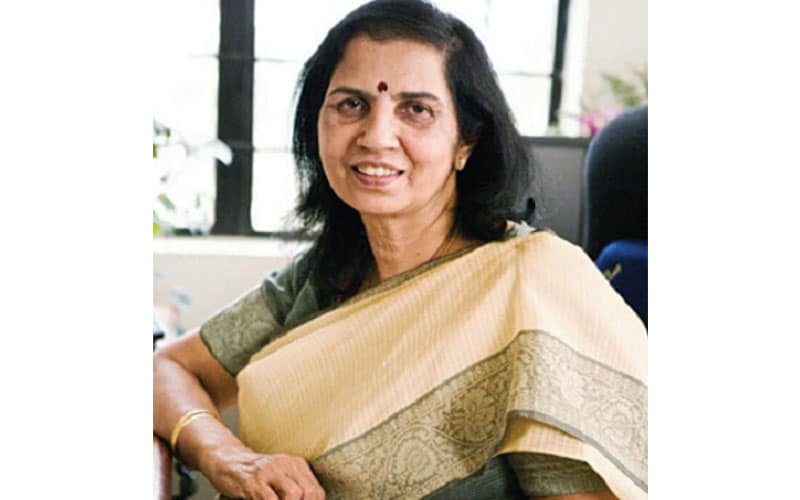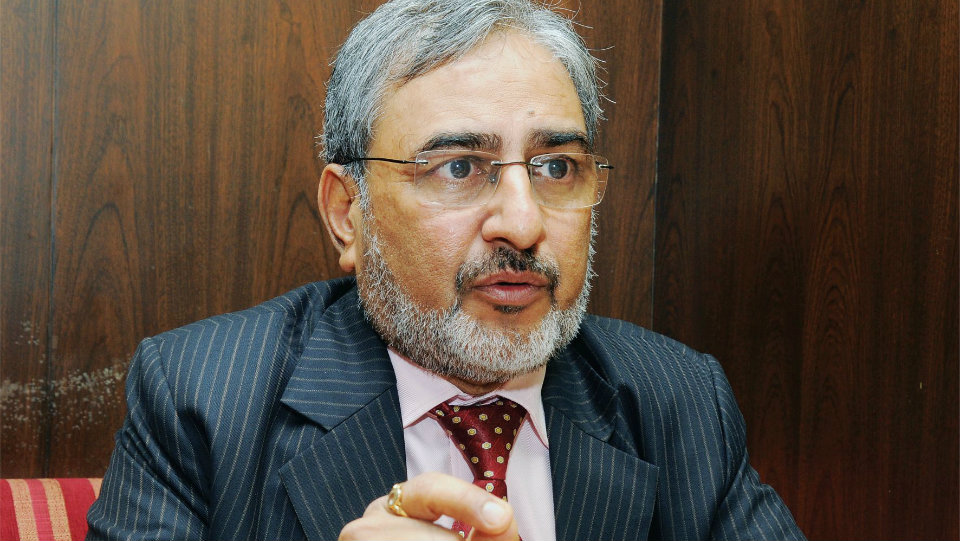There are many diseases confronting man from times immemorial but every generation finds a treatment or cure for the maladies. One such dreaded infection is HIV/AIDS, which more than 30 years ago was considered a killer disease. However, the stigma attached to it still exists, though far fewer people are dying today because of it, as other newer diseases are taking over.
Dr. Ishwar S. Gilada, President of AIDS Society of India (ASI), was in city recently to participate in the 20th anniversary of Asha Kirana, an NGO working on AIDS. Star of Mysore Features Editor N. Niranjan Nikam caught up with this ebullient doctor at Hotel Southern Star, where he spoke about the challenges facing the doctors and the infected patients, how medicines are available now to treat them and why he gave up a Government job to fight AIDS. —Editor
By N. Niranjan Nikam
Star of Mysore (SOM): You are the first person to raise an alarm against AIDS in India in 1985. But, late Dr. Suniti Solomon is also said to be the first Indian to diagnose the first Indian AIDS case in Chennai. Can you throw some light on this?
Dr. Ishwar Gilada: I am basically a specialist in Sexually Transmitted Disease (STD) and was working at JJ Hospital in Mumbai from 1981. I used to examine at least 100 patients with STD every single day in the Out-Patient Department. When I asked how he had contacted the disease, the reply would be visit to Kamatipura or Falkland Road — the famous red light areas in Mumbai. I was asking and wanting to know why women are not coming here. Some of them were ready to talk to us without the brothel house owners, but we wanted to convince them that we are not from any political party and we were here on voluntary basis. The sex workers were scared to cross the red light area because if the Police spotted them, they would be put behind bars and fined for flesh trade. So, they were fine if they were treated in their area itself.
SOM: Very interesting.
Dr. Gilada: To begin with, we started health camps in the red light area. AIDS could have been there prior to 1981, I do not know. To tell you the exact date it was on June 20, 1982, I conducted a health camp in Kamatipura and Falkland Road. Our team had a gynaecologist, STD specialist and a general Physician. The team did vaginal check and took blood samples. Next day, we came to know that the newspaper headlines read ‘First health camp conducted for sex workers in India.’
Then there was a conference in Ireland in 1985, which I attended. My paper was on pattern of STD among sex workers. After my presentation, one person from the US was speaking on AIDS. I had kept the clippings of the scientific publication in my file from 1981. Like any other Indian, I thought AIDS will never come to India. But he said there may be people who are dying of it in India and Africa and the doctors there are not aware. I felt very offended. He asked me to go back and do a sample survey to find out how many doctors were aware of AIDS. I came back to Mumbai and did a sample survey for both private and government doctors. It was a simple questionnaire: expansions of HIV (Human Immunodeficiency Virus), AIDS (Acquired Immune Deficiency Syndrome), almost 80 per cent of them did not know.
If the doctors themselves are unaware how will they diagnose. There is a quotation in our Book of Surgery ‘Eyes do not see what the mind does not know.’ So I told myself, let us start an awareness programme on AIDS and HIV for doctors without which we cannot progress.
This news was featured in the Time magazine of October 1985. After reading this article, somebody from Abbott Laboratories, Hong Kong, came straight to meet me and asked me to conduct the tests. In 1985, out of 600 sex workers tested, three were positive.
I am not a lab specialist like Dr. Suniti Solomon. I needed the help of the lab. The samples were sent to National Institute of Virology, Pune. They said the lab did not have technique and it should be sent to AID Atlanta, USA and they took about four to five months to confirm and the results came around May 1986. But the samples were collected in November 1985. Suddenly the news came of six sex workers having AIDS in Chennai.

Dr. Suniti Solomon
I sent telegrams to Parliament Speaker Dr. Balram Jakhar and Union Health Minister Margaret Alva and she mentioned about AIDS positive case on the floor of the House. We were issued notice. I replied that I am a technical person and I had expressed my opinion and willing to explain it to the members of the House. This was about the case reported from Chennai. Dr. H. V. Hande was the Health Minister in Tamil Nadu and he called me and asked if I was a HIV expert and at that time no one was an expert; but he wanted me to go and see the cases and I accepted. My MD exams were still a few days away and I went to Chennai.
The six women were lodged in the Remand Home and none of the doctors had seen, touched or examined them. They were sharing a single room and offered plate of food and tea through a small window with the help of a stick. They cried and told me that I was the first doctor to touch them. I made carbon copies of the notes made after examining them. Only one of them had symptoms and they were more of HIV cases though they were positive. Those days, they did not know the difference between the two. AIDS is end stage whereas HIV positive is a virus that attacks the immune system. When the myths go into the community, it is percolated into the society.
Then, Dr. Suniti Solomon called me and said after this announcement, lot of press people are coming to me and I know nothing about it. So, I went to her home in Chennai and we discussed. I was very well informed because I had read extensively about it and I had also conducted camps in Mumbai for sex workers. The credit of detecting the first case went to Dr. Suniti Solomon since she was a guide for a Ph.D student who was working on ‘Pattern of STD and HIV among sex workers.’ But I have no regrets. I have done a lot of work. It is not important who found it first.
SOM: You have come a long way in bringing India on AIDS control map of the world. What is the difference about fear of AIDS from then till now?
Dr. Gilada: Earlier they feared two things — one was fatality of the disease and second, the fear of stigma and discrimination because it was related to sex. I think it was more of the second one. One fears to tell about a family member who suffers from cancer though it can be fatal. So that stigma is deep-rooted in our community. We have carpet culture — above the carpet very clean, below the carpet very dirty.
You do anything but don’t get caught. You have to control HIV and AIDS at the sex worker level. Each sex worker has an average of 100 to 150 contacts every month, that is about an average of 1,000 per year. So by controlling one person you are controlling about 1,000. Many among them have family so you are controlling their wives and other sex partners from getting infected. Therefore, we started ‘Project Saheli.’ We realised that without giving honour and dignity to the brothel owner we will not be successful as she governs the entry into brothel.
The Government agreed to supply free condoms and we put lot of pressure on them, as there was always shortage of condoms. All this controlled HIV and STD in such a way that it has gone down by 80 to 90 per cent.








hello everyone writing this article for the world to know about a true healer of the DEADLY VIRUS (HIV&AIDS) well not much to say contact him and also be a testifier dr.lucky and herbal medical dr. whom the LORD has sent to put and end to the search of THE COSTLY VACCINE FOR THE VIRUS and you can contact him through his clinic email : [email protected] call or whatapp him via +2349050606649